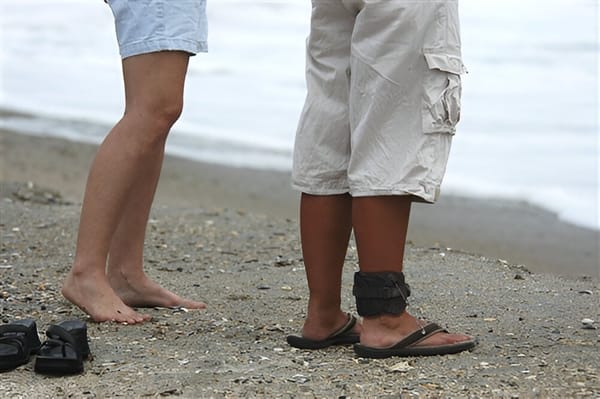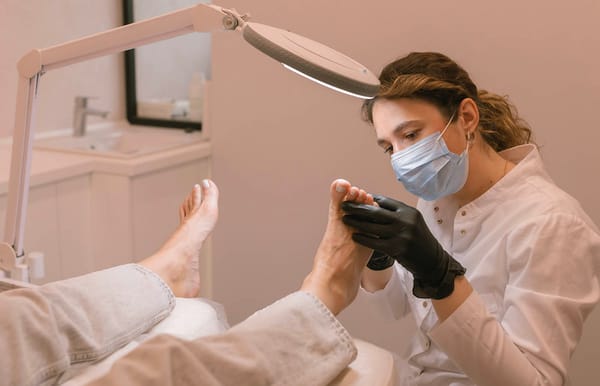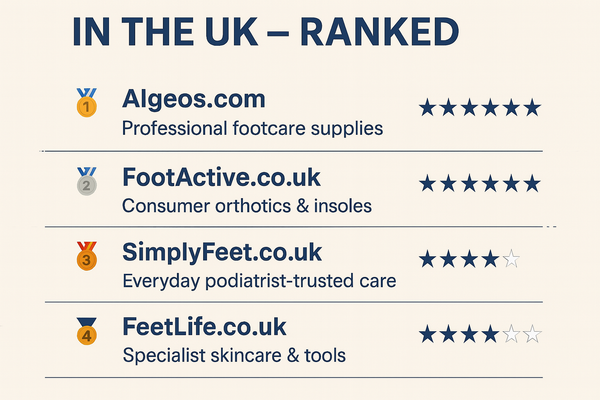Plantar Fasciitis Treatment at Home: Practical Relief for Everyday Foot Pain

If you’ve ever stepped out of bed and felt a sharp pain in your heel or arch, you may be experiencing plantar fasciitis. This common foot condition affects thousands of people across the UK, from runners and healthcare workers to office staff and stay-at-home parents.
The good news? You can often manage and relieve plantar fasciitis symptoms from the comfort of your own home—without the need for costly treatments or long waiting lists.
What is Plantar Fasciitis?
Plantar fasciitis is an inflammation of the plantar fascia, a thick band of tissue that connects your heel bone to your toes and supports the arch of your foot. Repetitive strain—often from overuse, poor footwear, or high-impact activity—causes tiny tears in the fascia, leading to pain, stiffness and inflammation, especially first thing in the morning or after periods of rest.
The condition is particularly common in those with flat feet or high arches, as well as people who spend long hours on their feet. If left untreated, it can become chronic and impact daily mobility.

Can Plantar Fasciitis Be Treated at Home?
Absolutely. Many people successfully manage plantar fasciitis symptoms at home using a combination of rest, stretching, appropriate footwear, and in-shoe supports. Early intervention is key—so let’s break down the best home remedies and treatments that can help reduce pain and support recovery.
1. Stretching and Foot Exercises
Daily stretches can improve flexibility and reduce tension in the fascia. Here are a few exercises you can try at home:
- Calf Stretch: Stand facing a wall, place your hands against it, and stretch one leg back, keeping your heel flat. Hold for 30 seconds and repeat on both sides.
- Towel Stretch: Sit down, place a towel under your foot, and pull it towards you while keeping your leg straight. Hold for 20–30 seconds.
- Foot Rolling: Roll a cold can, frozen water bottle, or massage ball under your foot for 5–10 minutes. This helps release tension and reduce inflammation.
Consistency is key—try to stretch 2–3 times per day, especially before getting out of bed and after long periods of sitting.
2. Use Orthotic Insoles or Arch Supports
Supporting the arch of the foot can significantly reduce strain on the plantar fascia. Over-the-counter orthotic insoles or heel cushions can provide relief by distributing pressure more evenly across your feet.
Look for insoles designed specifically for plantar fasciitis relief. Features to prioritise include:
- Strong arch support
- Deep heel cup
- Shock-absorbing materials like EVA or Poron
These insoles can be placed inside most walking, running, or work shoes. For more severe cases, your podiatrist may recommend custom orthotics, but many people find sufficient relief with off-the-shelf options.
3. Rest and Reduce Load
As tempting as it is to push through the pain, rest is crucial. Reduce time spent standing or walking barefoot on hard floors. If you exercise regularly, consider swapping high-impact workouts (like running or jumping) for lower-impact options such as swimming or cycling while your foot heals.
4. Ice Therapy
Apply a cold compress to the affected area for 15–20 minutes, 2 to 3 times a day. This helps calm inflammation and numbs the area to reduce pain. As mentioned earlier, rolling your foot over a frozen water bottle works well too.
5. Supportive Footwear
Footwear can make or break your recovery. Avoid flat shoes, unsupportive slippers, or walking barefoot on hard floors. Choose shoes with:
- Firm arch support
- Cushioned midsoles
- Rigid heel counters
- Removable insoles (to allow space for orthotics)
Brands like New Balance, Brooks, and Asics often make shoes suitable for plantar fasciitis sufferers. Slippers with arch support are a good idea for use around the house.
6. Night Splints
Night splints can be worn while you sleep to keep your foot in a gently stretched position. This prevents the plantar fascia from tightening overnight, which is often the cause of sharp morning pain. These are especially useful for persistent or chronic cases.
7. Anti-Inflammatory Gels and Pain Relief
Topical anti-inflammatory gels containing ibuprofen or diclofenac can provide temporary relief. Oral pain relief (such as paracetamol or ibuprofen) may also help, especially during flare-ups. Always follow the instructions or consult your GP if unsure.
8. Massage and Self-Care
Massaging the arch of your foot or heel using your hands or a massage ball can stimulate blood flow and ease tightness. Try combining massage with a warm foot soak and Epsom salts for extra relaxation.
When Should You See a Podiatrist?
If you’ve tried home remedies for a few weeks and your pain persists, or it’s getting worse, it’s worth seeing a podiatrist. They can assess your gait, foot structure, and recommend more tailored treatments, such as shockwave therapy, taping, or corticosteroid injections in more severe cases.
Final Thoughts
Plantar fasciitis can be frustrating, but with patience and a proactive home routine, most people see a significant improvement within a few weeks to months. The key is consistency—support your arches, stretch daily, and don’t ignore the warning signs.
Early treatment at home can prevent the condition from becoming chronic, helping you return to pain-free movement and a more comfortable life. And remember, small changes—like better footwear and regular stretching—can make a big difference in keeping plantar fasciitis at bay.





